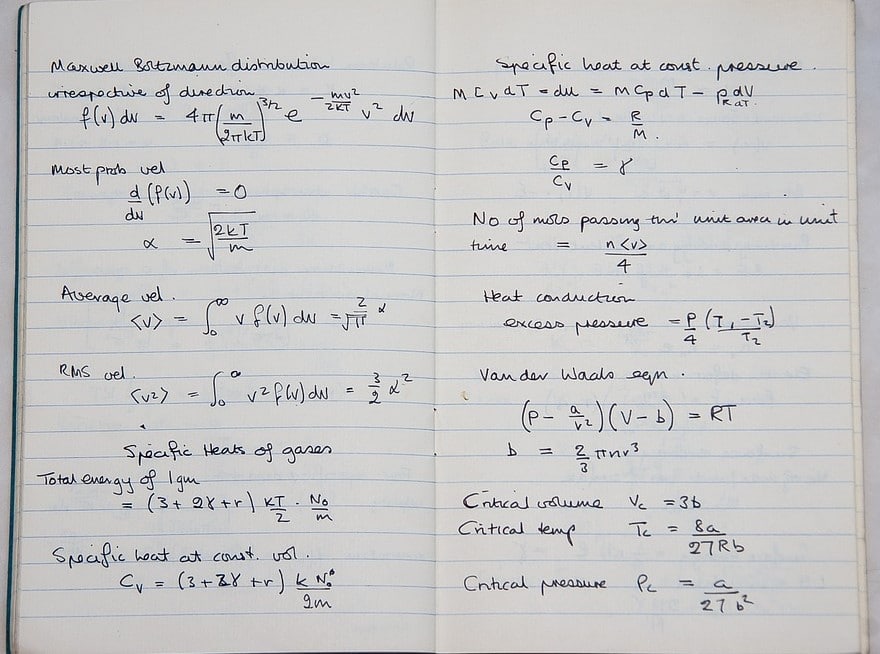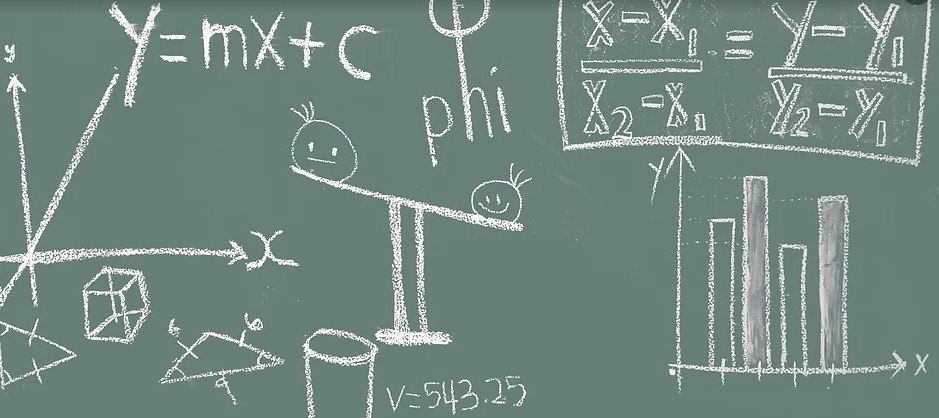SAT Math Topics | Algebra, Advanced Math, Problem Solving & Data Analysis Tips
Not sure how you can go about the SAT math section? Before you can prepare and face the test, you must first understand what is in it. For instance, which SAT math topics do you expect to cover in the test? What is the percentage of geometry questions in the sat math section?
SAT math is the third and fourth sections on the SAT Reasoning Test after the writing and reading sections. It comprises two sections, the first part lets you use a calculator, but you cannot use a calculator while working on the other part.
So, which topics are these, and how do you tackle them? Read this article to the end to get a complete guide of the math topics on SAT and, in addition, see our 'Top 20 SAT Math Formulas' post.
We also have the best SAT prep books that will help you in preparing for the test.

SAT Math Topics- What to Know
The math section puts a lot of emphasis on solving equations, algebra, and interpreting data from graphs and tables.
The college board has put the math problems into three categories, namely:
- Heart of Algebra
- Passport to Advanced Math
- Problem Solving and Data Analysis
The categories carry about 90% of the SAT math sections you will encounter in the actual test.
There are other topics that the college board categorizes as additional topics. These include basic trigonometry, complex numbers, and geometry. The topics make up for the remaining 10% of the section.
In total, the math section constitutes 58 questions. Of the 58 items, multiple-choice questions will require the student to choose one correct answer. The remaining questions are known as student response questions.
The student response questions don’t present any choices. The student has to solve the problem and get the correct answer.
Here are the SAT courses we reviewed that can be of help in your SAT math practice.
In addition to understanding the topics and the SAT math format, you may also want to know the section's features. The features of the SAT math test include:
Calculator and no calculator section
You will have 80 minutes to tackle all the SAT math problems. The 80 minutes are divided into two sections; one will take 25 minutes, and the second one will be 55 minutes.
In the 25 minutes section, you cannot use a calculator to solve the SAT math questions. But do not worry as the items in this section do not even require you to use a calculator. Attempting to use a calculator in this section may just slow you down.
With only 80 minutes to solve a total of 58 questions, you cannot afford anything that will slow you down. You want to make sure that you maximize the 1.4 minutes on each question.
After a short break, you will sit for the second section of the test in which you are allowed to use a calculator. You will have 55 minutes to solve 38 questions, which shows you cannot afford to slow down.
As such, even if you are allowed to use a calculator, it is not a must that you use one. During your SAT math prep, you must practice when and how you need to use a calculator. Also, ensure that you use the recommended calculator.
One of the best SAT math tips that you can use is ensuring that you carry your calculator not to have to share. Sharing may slow you down, which you cannot afford. Also, use a calculator you are familiar with instead of using a brand-new calculator. Also, ensure that it is in good working condition and has fresh batteries.
Real-world applications
One feature of the math topics on the SAT is their application of real-world skills. Sometimes, you’ll get questions that will ask you to convert currency from one country to another. Additionally, you can be asked to calculate the amount of fuel you need to travel a particular distance.
The goal of the College Board is to align classroom learning with applications in the real world. With that, the student can think about real-world issues instead of too much abstract thinking.
Trigonometry and geometry questions
Among the math topics that you encounter in the math section includes geometry and trigonometry. You may need to prepare specifically for the topics, especially trigonometry, as not everyone has studied it in school.
As you prepare for the main topics, ensure you are familiar with formulas and concepts useful in trigonometry and geometry to maximize your score.
Multi-steps problems
The wording in the math section of the SAT is straightforward. But, solving the problems will involve a lot of calculations and thinking. It may require you to use concepts from various content areas to solve a question.
Since the questions may involve long scenarios, you must be strict with your time management.
What’s Tested on the SAT Math Section?
Knowing the list of math topics in this section is not enough to make you pass. You also need to understand what exactly they test so that you can prepare well.
The more you understand what is tested, the better your chances of increasing your score significantly.
The math section is divided into two sections; the no calculator section will take 25 minutes, and the calculator section will take 55 minutes.
The no calculator section will have 15 multiple choice questions and five grid-ins. You will tackle 30 multiple choice questions and eight grid-ins in the calculator section, including one extended thinking question.
You will have four options for the multiple-choice questions, and your job will be to choose one correct answer.
On the other hand, you have the grid-ins, which are also known as student response questions. Here, you need to work out and fill your answers. There will be no options to choose from.
For instance, you can have a question such as:
X+Y= 8
X+2Y= -24
What is the value of x?
The questions are known as grid-ins as you have to grid to get the correct answer. What do you need to know about grid-ins before sitting for the actual SAT?
You will be provided with a grid where you will enter your answers. You shouldn’t mark more than one circle per column. |
Grid-ins questions don’t have negative answers. There is no way to enter a negative sign in the grid. |
You are allowed to enter decimals and fractions in the grid but not mixed numbers. |
You shouldn’t include pi in the answer, but you should use decimal instead. |
For some questions, you’ll get more than one answer, ensure that you grid-in one answer. |
So, what skills are tested in the math section of the SAT?
Some of the skills tested on the math section of the Sat Reasoning Test include extended thinking. Extended thinking is vital not only in your college studies but also in real-life situations. With the comprehensive thinking questions, you will be given a scenario from which you have to answer multiple questions.
Also, the math sections test the calculator fluency skill. Calculators will be vital in your studies in college. As such, the College Board wants you to learn the skill of deciding when and how to use the calculator during the test.
Even in the second section, you can use a calculator; you don’t need to use one. In fact, using a calculator may slow you down. According to the College Board, a calculator is an essential tool, and it is as smart as the person using it.
The math section also seeks to align the learning in the classroom with real-world applications. With that, the student will learn to not concentrate so much on abstract thinking but also on how they can apply the knowledge they learn in the real world.
So, what math is on the SAT? The following are the SAT math topics you will come across in the test:
Heart of Algebra
In the Heart of Algebra content area, you will encounter 19 questions. The topics in this content area include:
Among the tasks that you will come across in this content area include simplifying equations and expressions and solving a variable using multiple steps. You will also use two variables, usually x and y, to solve inequalities and variables within a function.
Additionally, you will be required to show an equation that describes a graph or a graph that shows an equation. Also, indicate how a change in an equation would affect a graph.
An example of graphing a linear equation under the Heart of Algebra content area is:
A line in the xv-plane passes through the origin and has a slope of 1/7. Which of the following points lie on the line?
A) (0,7)
B) (1,7)
C) (7,7)
D) (14,2)
Passport to Advanced Math
In the Passport to Advanced Math content area, you will come across 16 questions. This area's problems will require you to work with nonlinear equations, unlike in the Heart of Algebra, where you did linear equations.
The questions will include word problems, quadratic expressions, and exponential expressions. You will be dealing with variables raised to an exponential that is neither zero nor one. The topics that you should expect to come across in the Passport to Advanced Math content area include:

Which tasks will you be required to carry out under the Passport to Advanced Math content area?
Among the tasks that you will encounter under these topics include getting a description of a graph and then determining a curve's equation from the description. You can also be required to figure out how a graph would change if its equation also changes.
You can also expect to use factoring to solve equations or use other methods to write the equations in another form. You can also expect questions that ask you to select an equation that matches a graph or choose a chart that corresponds to a linear equation.
The tasks in this content area will also include subtracting, adding, dividing, or multiplying two rational expressions and simplifying your results. It also includes dividing two polynomial expressions.
Note, nothing in the test will explicitly identify the questions in this area as a Passport to Advanced Math items. They occur in both calculator and no calculator sections and multiple choice and grid-in problems.
Here is an example of a question that you would get under this content area:
If 3x-y=12, what is the value of 8x/2y?
A) 212
B) 44
C) 82
D) The value cannot be determined from the information
Problem Solving and Data Analysis
You will get 17 questions in the Problem Solving and Data Analysis content areas out of 58 items.
The topics under this area include:
You will not encounter problems in this area in the no calculator section. Your subscore in this domain will be on a scale of 1-15.
The tasks under this domain include using multi-steps to get percentages, density, unit rate, and ratio. You can also use data to summarize data, such as probabilities. You will also be given a percentage, ratio, density, or unit rate to solve a multi-step problem.
Additionally, the Problem Solving and Data Analysis domain will require you to use statistics to determine median, mean, mode, range, and standard deviation. The tasks may also include determining the accuracy of a data collecting method.
The SAT questions math in this domain can also give you sample data, and then you will have to determine the estimated populations based on the data.
Additional Topics in Math
In the Additional Topics in Math domain, you will get six questions.
The questions will come from a range of areas including trigonometry, geometry, and complex numbers. The topics under this domain include:

So, which tasks do you expect to come across in this area?
The tasks in this domain include applying a triangle's properties to determine angle measure and side measurements. You can also expect to solve problems with cosine, sine, and tangent and even determine the shape’s volume.
An example of a question under this section includes:
In a right triangle, one angle measures x0, where sin x0 =4/5. What is cos (900 – X0)?
What the Math Test Measures
As you already know, your score in the SAT will determine your college or university admission. But that is not all that the math test measures.
Questions in the math test are designed to measure your problem-solving skills. As such, they will measure your ability to offer the most efficient solutions.
The test also measures how well you understand math concepts, relations, and operations.
Finally, the test will measure the ability to align the knowledge you get in the classroom with real-world applications.
Final Thoughts
Understanding what to expect in the math section of the SAT is an excellent strategy towards getting a perfect score. As you prepare for the test, you will concentrate in the areas to ensure you understand all the concepts well. Here, we have offered you an in-depth analysis of what to expect in the math test and how to ace it.


